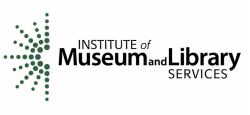Asking Open-Ended Questions
As we all know, much learning for young children happens during social interaction. Asking open-ended questions is how inquiry begins and understanding develops. Good questions allow children to develop vocabulary, make sense of what they are doing and learn to communicate their ideas. If every discussion question you ask elicits a “yes” or “no” answer, then you are not asking open-ended questions. It takes extra time and effort to ask only open-ended questions. Here are some examples:
Describing questions
What does that remind you of?
What do you notice about these cars?
Can you describe what happened?
Predicting questions
What do you think will happen next if…?
Evaluating questions
What do you like about this? Why?
What don’t you like? Why?
Which ball do you think will roll farthest?
Which material will be best for this ramp?
Attention-focusing questions to call attention to significant details
What do you notice about...?
What is it doing?
How does it feel?
Measuring and counting questions to generate more precise information
How many?
How much?
How heavy?
Comparison questions to foster analysis and classification
How are they alike?
How are they different?
Action questions to encourage exploration of properties and events
What would happen if…?
Problem-solving questions to support planning and trying solutions to problems
How could we…?
How can we find a new way to do it?
Reasoning questions to encourage reflection and to construct new ideas
What do you think?
Can you explain that?
What makes that happen?
What other ideas can we think of?
Describing questions
What does that remind you of?
What do you notice about these cars?
Can you describe what happened?
Predicting questions
What do you think will happen next if…?
Evaluating questions
What do you like about this? Why?
What don’t you like? Why?
Which ball do you think will roll farthest?
Which material will be best for this ramp?
Attention-focusing questions to call attention to significant details
What do you notice about...?
What is it doing?
How does it feel?
Measuring and counting questions to generate more precise information
How many?
How much?
How heavy?
Comparison questions to foster analysis and classification
How are they alike?
How are they different?
Action questions to encourage exploration of properties and events
What would happen if…?
Problem-solving questions to support planning and trying solutions to problems
How could we…?
How can we find a new way to do it?
Reasoning questions to encourage reflection and to construct new ideas
What do you think?
Can you explain that?
What makes that happen?
What other ideas can we think of?




